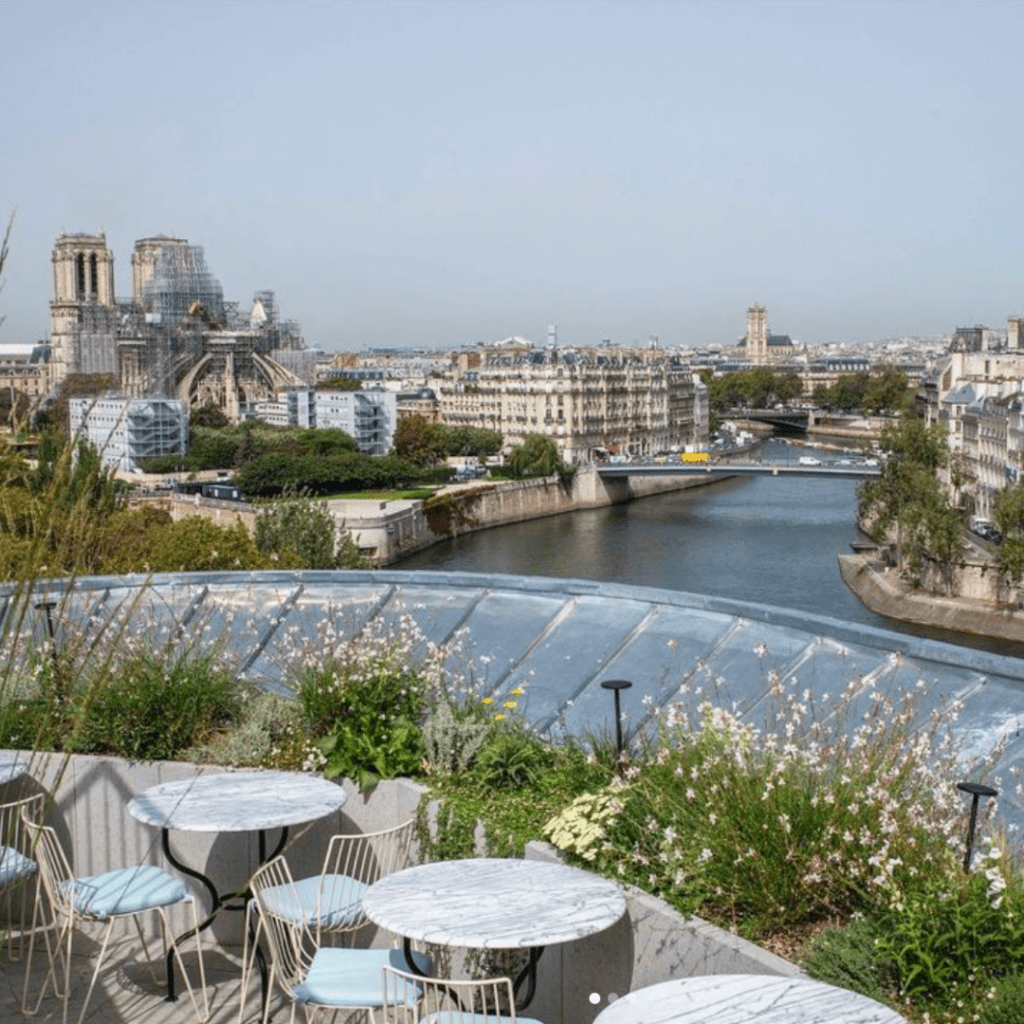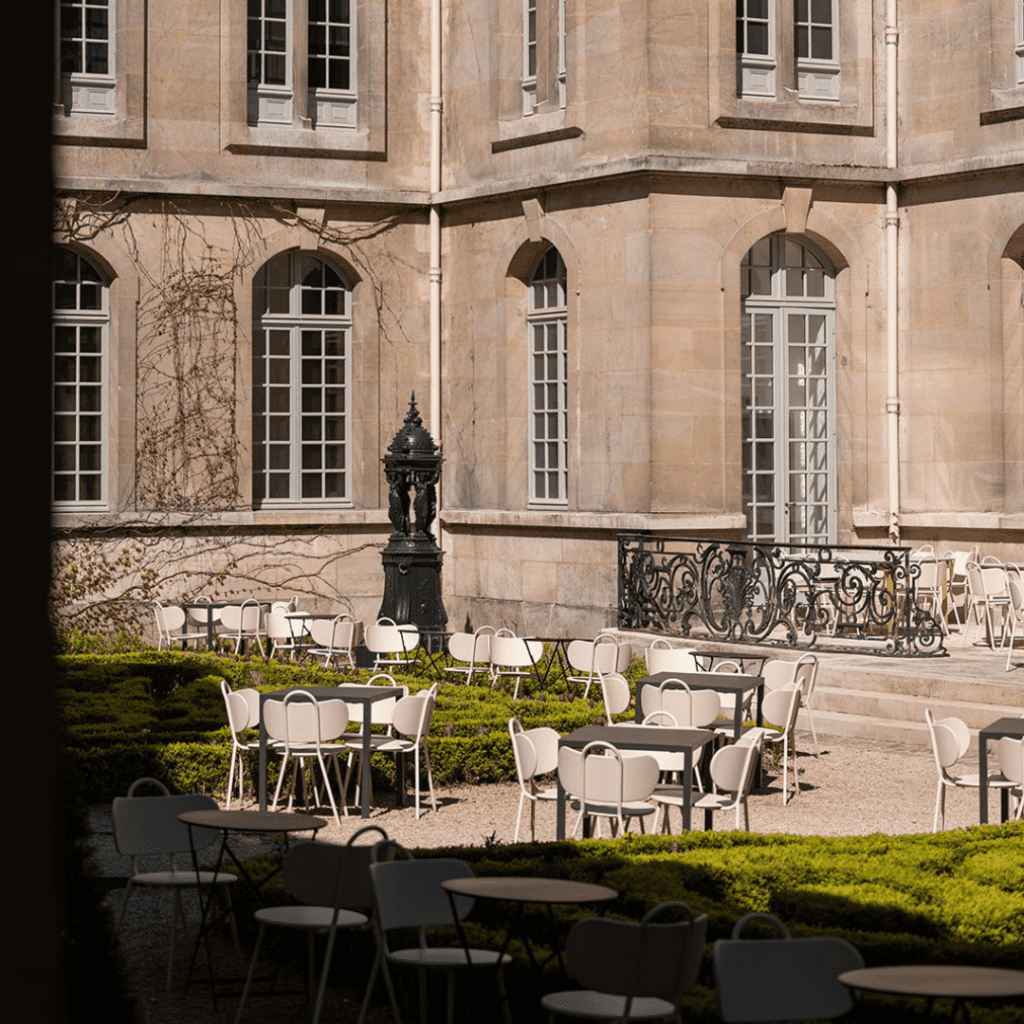April in Paris might be how the song goes, but even the guy who wrote it knew that you ‘have to wait until May before things start popping.’ Come May, the cherry blossoms might have bloomed and gone, but many other flowering trees (such as Paris’s signature horse chestnuts) are at peak loveliness, and provide a beautiful backdrop for May’s other main attraction: the reopening of rooftop and garden terraces. Here are five al fresco destinations you’ll want to sip or sup in this summer …
Place Dauphine

This beautifully bucolic square — albeit a triangular one! — doubles as one enormous terrace in the warmer months, when the bordering restaurants extend their quaint chairs and tables out into the delightful grove of pink-bloomed chestnut trees. Whether you’re nibbling at croissant in the morning (when Place Dauphine is so quiet it feels like your own), you’re eating a meal while watching locals play pétanque, or you’re enjoying apéro hour in the dappled sunlight, Place Dauphine always feels no less than perfect.
La Tour d’Argent

Recently renovated, this legendary Parisian fine-dining institution now has several enticing new features, including a zinc-trimmed, garden-edged rooftop bar that boasts one of the most stunning of all Parisian views, along with a menu of mouth-watering cocktails and snacks. Open from 6pm during the week, from 12pm on weekends, reservations are essential. For more information, click here.
Le Grand Véfour

Another iconic Parisian eatery, Le Grand Véfour in the Palais Royal recently revamped its menu to cater to those seeking more accessible (albeit still elegant) brasserie fare. Fom May, you can continue to dine in the historic jewel box of a dining room, or you can choose to eat on either the terrasse jardin or the covered terrasse péristyle (pictured). Peruse the menu and make your reservation here.
Les Petites Mains

This popular outdoor pop-up, situated in the glamorous colonnade and garden of the Palais Galliera (the City of Paris’s fashion museum), has just returned for spring/summer 2024. Serving up a light-handed approach to food in all its seasonal, colourful loveliness, Les Petites Mains is open for lunch and dinner (the latter also serves a delicious view of a glimmering Eiffel Tower). Alternatively, pop along in the afternoon, when you can order a savoury snack or a sweet treat (blueberry and violet marble cake, anyone?). For more information, click here.
Fabula

Another beloved ephemeral museum terrace, Fabula (reopening 8th May) is set within the exquisite courtyard gardens of the historic rabbit hole that is the Musée Carnavalet. In keeping with its green surroundings, Fabula’s menu is ethical and ecological in focus, brimful with plant-based, local, seasonal options, responsibly caught fish, and cocktails packed with vibrant botanicals. Click here for more information.

